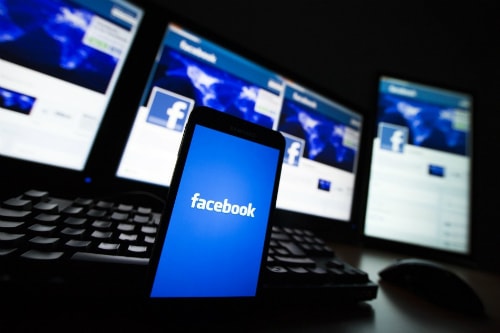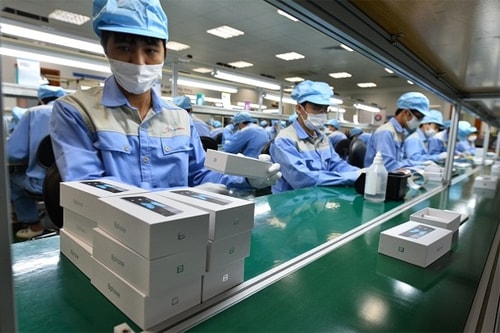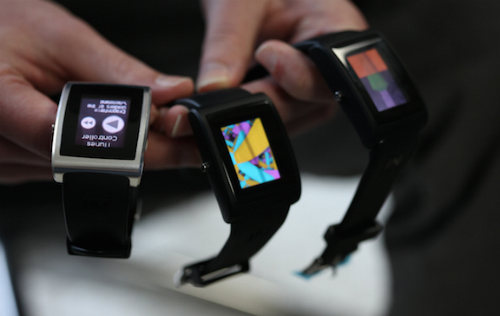5 highlights in the technology world in 2015
The expansion of Facebook, the cessation of analog television broadcasting in Vietnam and the Bphone phenomenon are three of the five highlights that were discussed a lot in 2015.
Facebook becomes an invisible power
At the end of January 2015, Facebook announced that it had 1.39 billion monthly active users and that number has now increased to over 1.5 billion. No longer simply an online connection service, Facebook has had a major impact on many aspects of personal and social life.
 |
| Facebook contributed $227 billion in sales worldwide. |
This social network is where politicians express their views and attract people's support. Economic activities on Facebook contributed 227 billion USD and created 4.5 million jobs in 2014 worldwide. Experts say that in the digital age, if a company does not have its own Facebook account, for whatever reason, that company is being left behind.
Not simply a means of communication and connecting members, Facebook is also a place for millions of users to express their strong voices on pressing social issues such as the tree cutting incident in Hanoi, a place for them to share the pain with the victims of the massacre in France or the joy when the gay marriage law was passed.
In Vietnam, despite many conflicting opinions, Facebook has become an indispensable part of Internet users. At the end of 2015, the Government tested a Facebook page called "Government Information" to disseminate information about Government activities more widely. This move was quickly appreciated because it will be easier for people to access official sources of information.
Analog television began to stop broadcasting.
From November 1, 2015, Da Nang City and four northern districts of Quang Nam (including Hoi An City, Dien Ban, Duy Xuyen, Dai Loc) became the first areas to stop broadcasting analog television, which had served tens of millions of viewers, and switch to digital terrestrial television.
 |
| Digital television brings many benefits. |
Analog television is the first original of television technology, in which the signal is broadcast from the television station to the receiver with the same image and sound as the original signal through the antenna system. This type is limited by space and is easily affected by obstacles and other wave sources such as radio and telephone. Meanwhile, digital television has a wider and farther coverage, the signals are digitized before transmission and the receiver must have a decoder to receive it.
Digital television is considered an inevitable step and many countries in the world have considered this an "inevitable" path. Digitalization brings high-quality programs to the people. Meanwhile, for the State, digital television helps free up a large, valuable frequency band to deploy new generation mobile information services, promoting the development of the information technology and telecommunications industry.
After Da Nang, it is expected that by December 31, 2015, four major cities including Hanoi, Ho Chi Minh City, Hai Phong and Can Tho will also stop broadcasting analog channels. However, the Steering Committee for the Vietnam Television Digitalization Project is seeking opinions on whether to postpone the "soft" shutdown of some analog television programs after Tet to March 1, 2016.
Anonymous launches cyber war against IS
The bloody terrorist attacks by the Islamic State (IS) militants, especially the shooting in Paris on November 13, have shocked and worried the whole world. Amid the gloomy news, the hacker group Anonymous declared an "unprecedented" war to wipe out IS from cyberspace.
The hacker campaign has somewhat hindered the online plans of the self-proclaimed Islamic State militants, such as shutting down tens of thousands of social media accounts, making it difficult for IS to propagate, angering the rebels with humorous memes...
The effectiveness of the campaign is debatable. Some argue that taking down IS accounts will make it harder for intelligence agencies to track terrorist movements. However, Anonymous explains: "IS spreads fear and hopes that their atrocities will make us silent and hide in fear. We want to show them that we are not afraid, not hiding."
Bphone phenomenon
With a massive promotion: "Made in Viet Nam" and an unprecedented big launch with loud statements about the product being "better than iPhone", Bphone has caused a wave of continuous debate in the technology world.
 |
| Origin and product quality are of interest to many people when it comes to Bphone. |
Many people expected Bkav to realize the dream of a high-end phone designed and manufactured by Vietnamese people. However, the birth of Bphone was surrounded by doubts about the origin and quality of the product, disappointment because of the high price as well as the tiring wait when Bphone was constantly delayed.
The technology world is divided when one side believes that Vietnamese people should support Vietnamese products and after all, these are just the first steps of Bkav, while the other side criticizes and considers Bphone just an exaggerated PR trick. Bphone sales figures are not disclosed so it is difficult to confirm whether the product is a success or failure. However, despite receiving many criticisms, Bphone is still seen as an impressive product with a Vietnamese brand.
The explosion of smart wearables
This boom is clearly shown through the latest statistics of research firm IDC. Global sales of wearable devices reached 21 million units in the third quarter of 2015, an increase of 200% compared to the same period last year.
 |
| The wearables market is booming this year. |
The wearables market has been crowded since 2014, but the arrival of the Apple Watch in April 2015 has created a fierce two-horse race with Fitbit. Fitbit is still the leading manufacturer of smart wearables, selling 4.7 million units last quarter, with Apple following closely behind with 3.9 million devices.
Meanwhile, China has quickly emerged as the fastest-growing wearables market, with domestic companies like Xiaomi and XTC entering the market with competitively priced products. Xiaomi even made a move that was considered "lightning fast" when it grew 815% compared to last year and sold 3.7 million wearables in the third quarter, just behind Apple.
Analysts predict that the smart wearable device market will continue to grow strongly and surpass the 200 million product mark in just the next three years. Currently, the most popular type of device is still the basic wearable device, which has the task of monitoring health, but in the next few years, smart watches with the function of connecting to the phone to display calls, messages, emails... will become more popular. Many other types of wearable devices will also appear with their own roles such as clothing accessories, contact lenses, headphones, rings, smart necklaces...
According to VnExpress
| RELATED NEWS |
|---|

